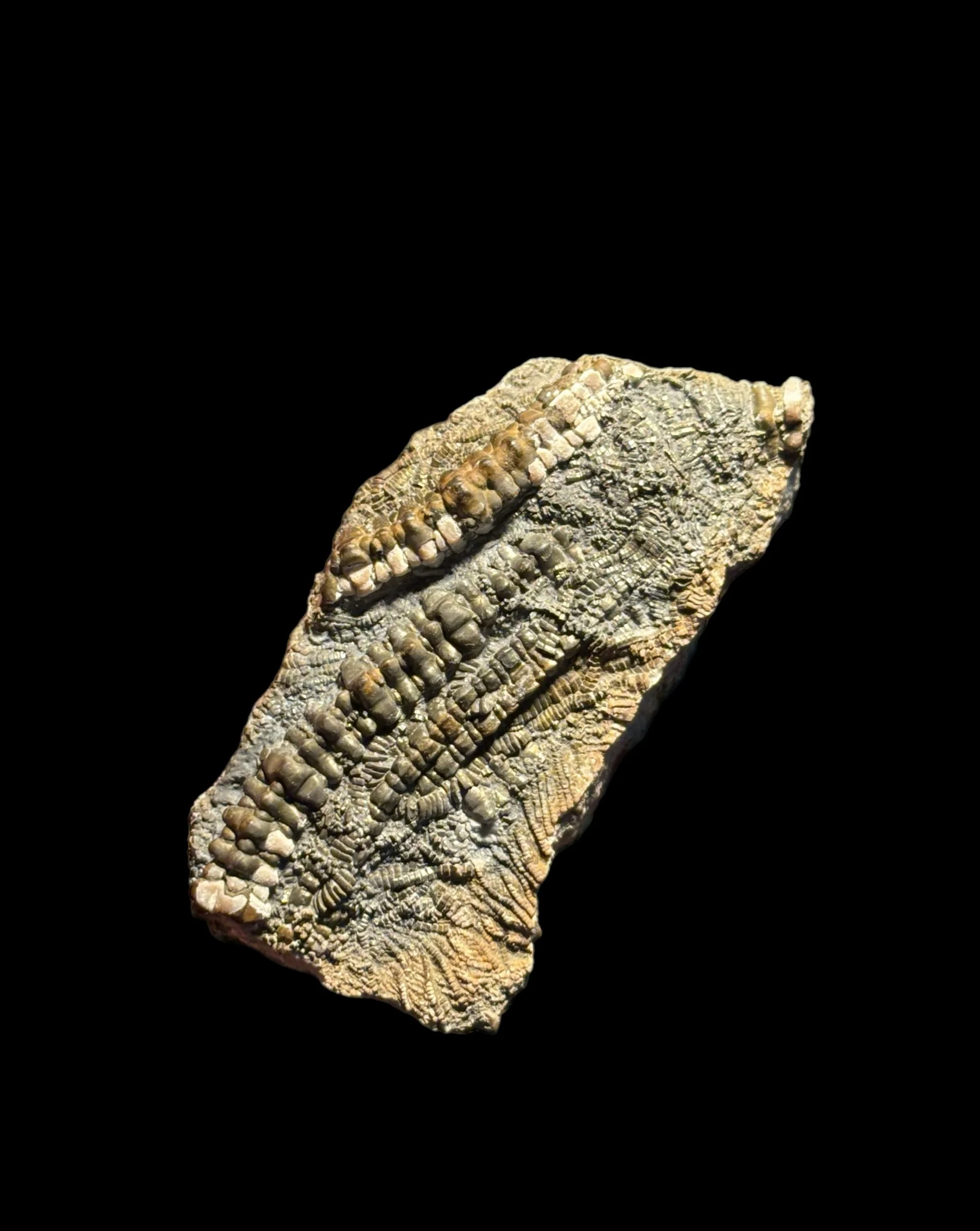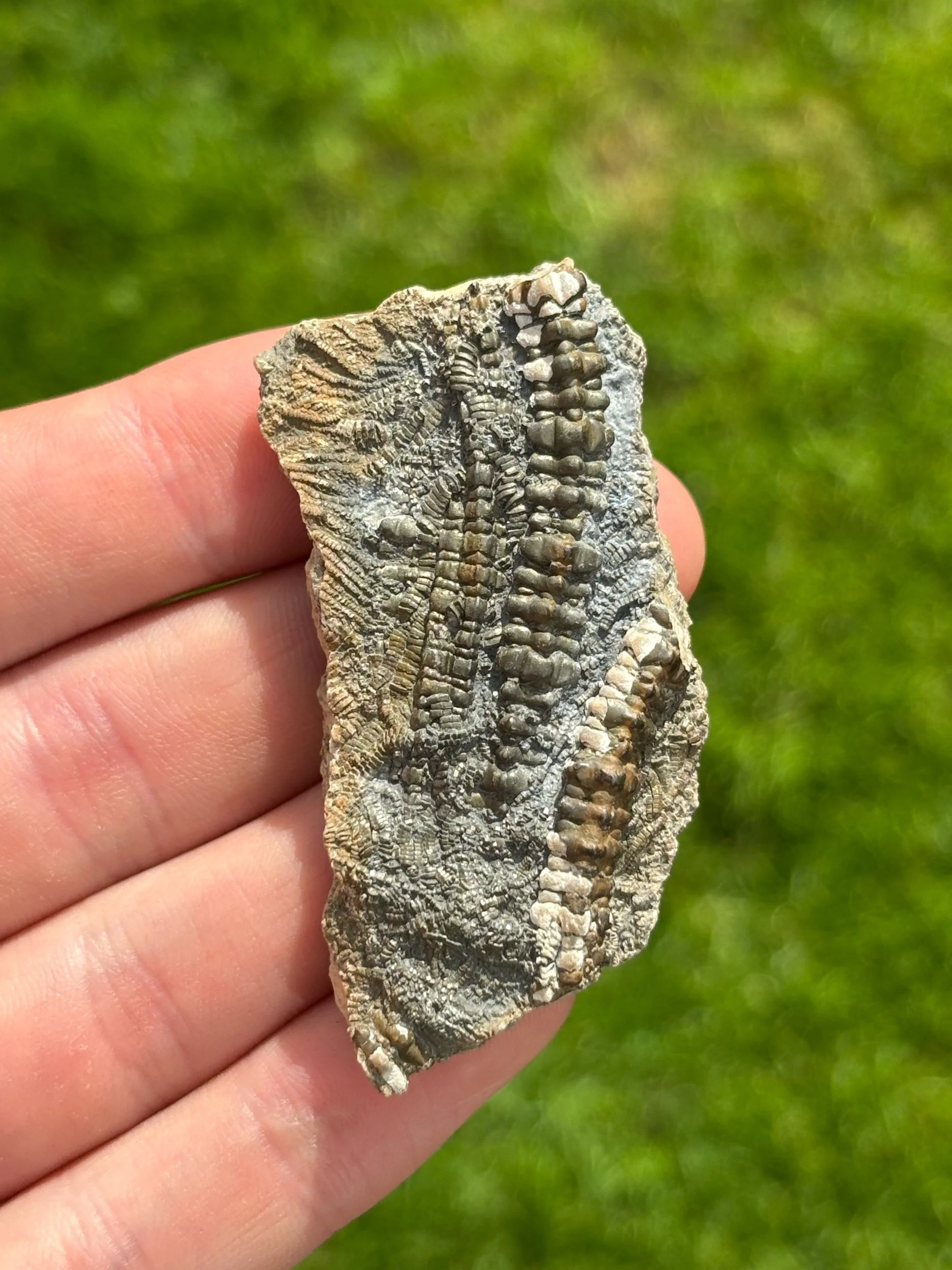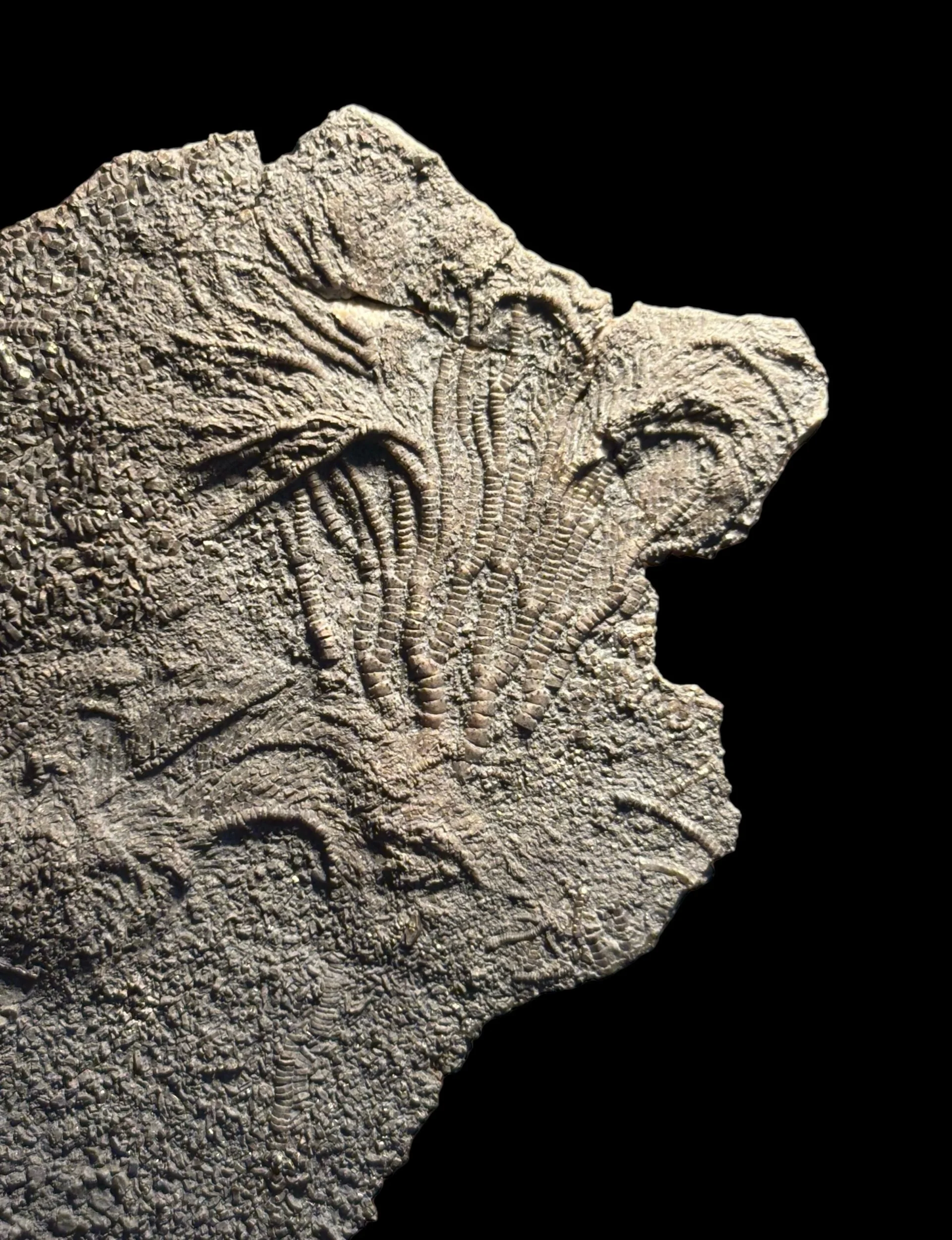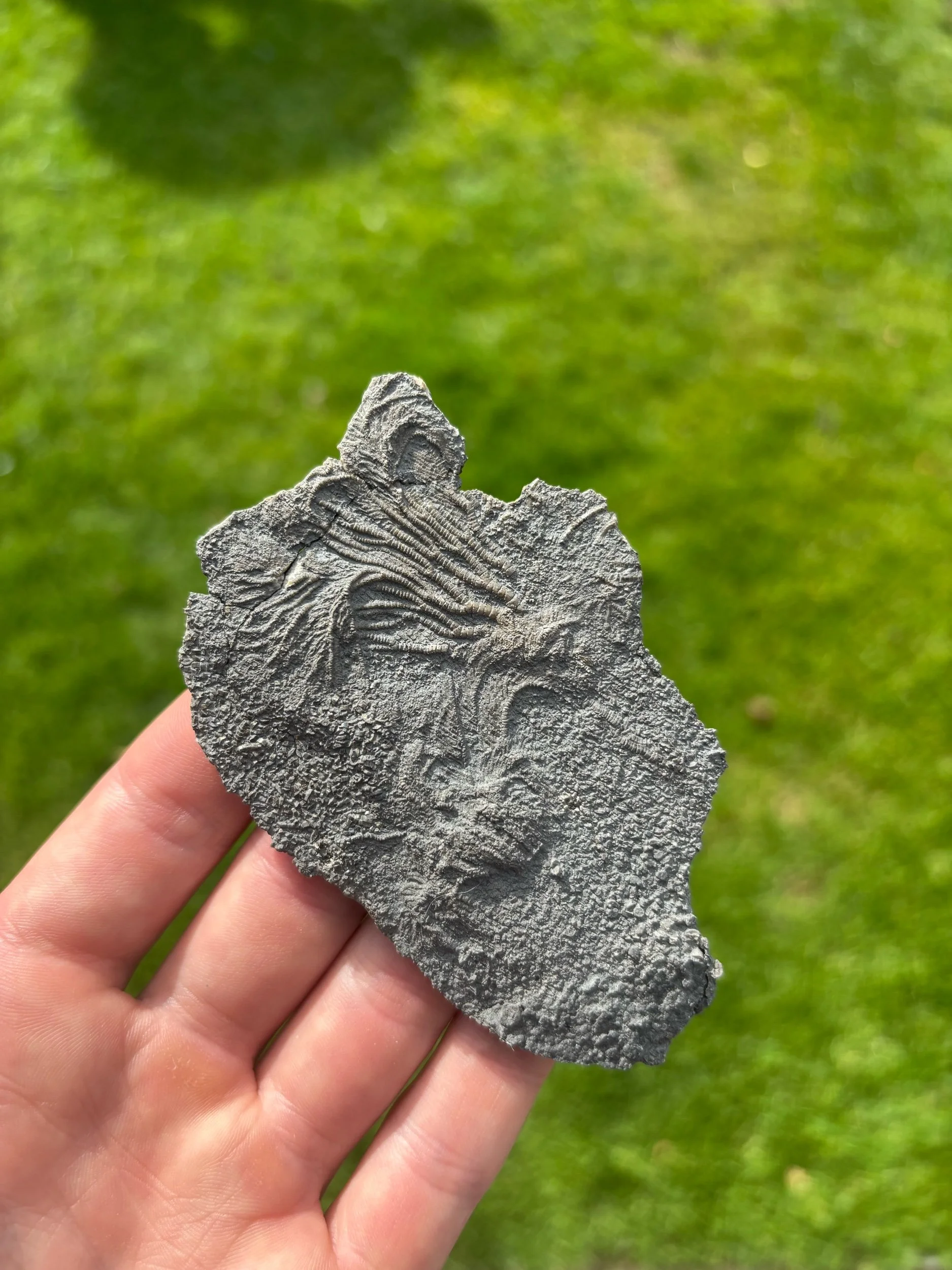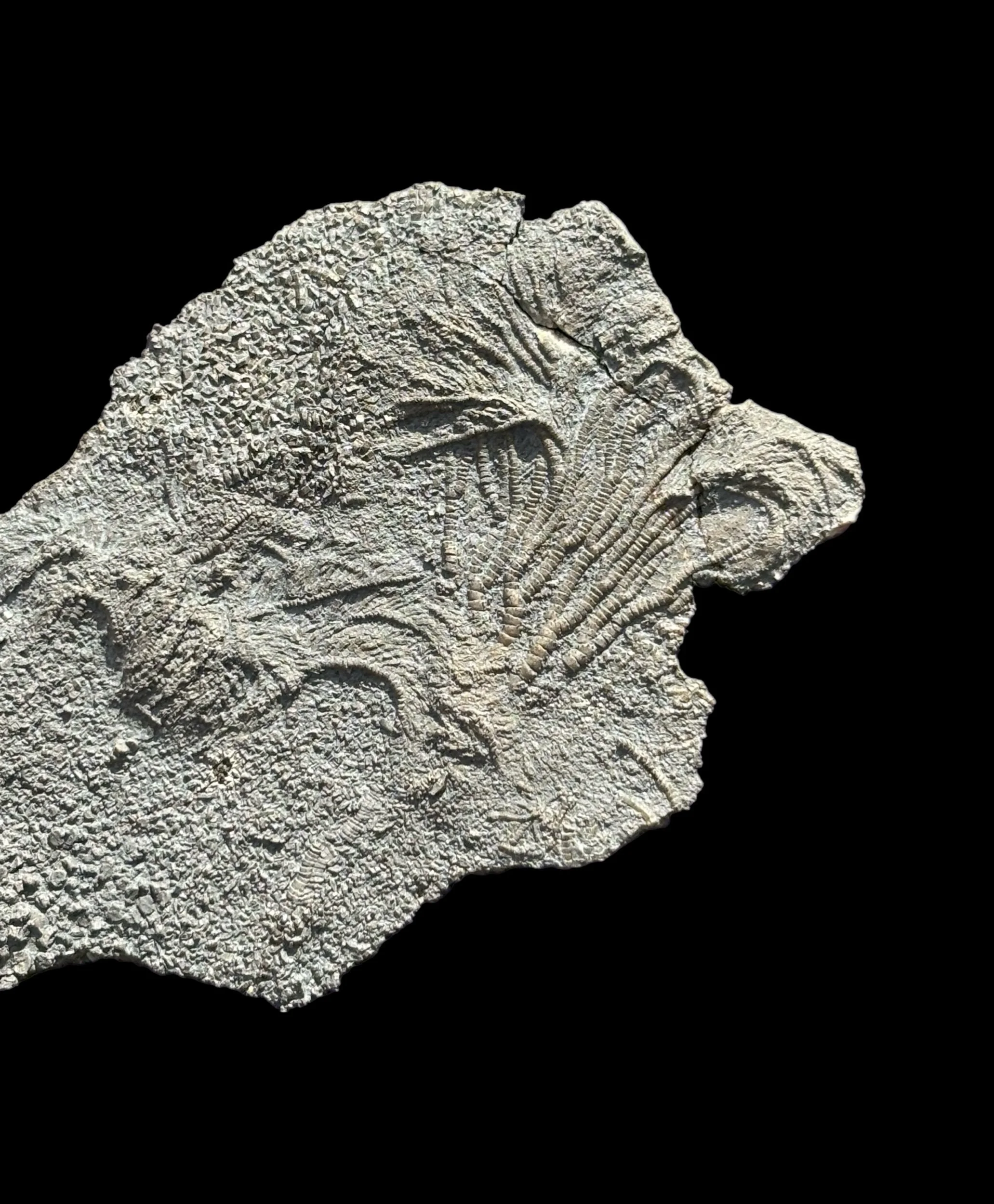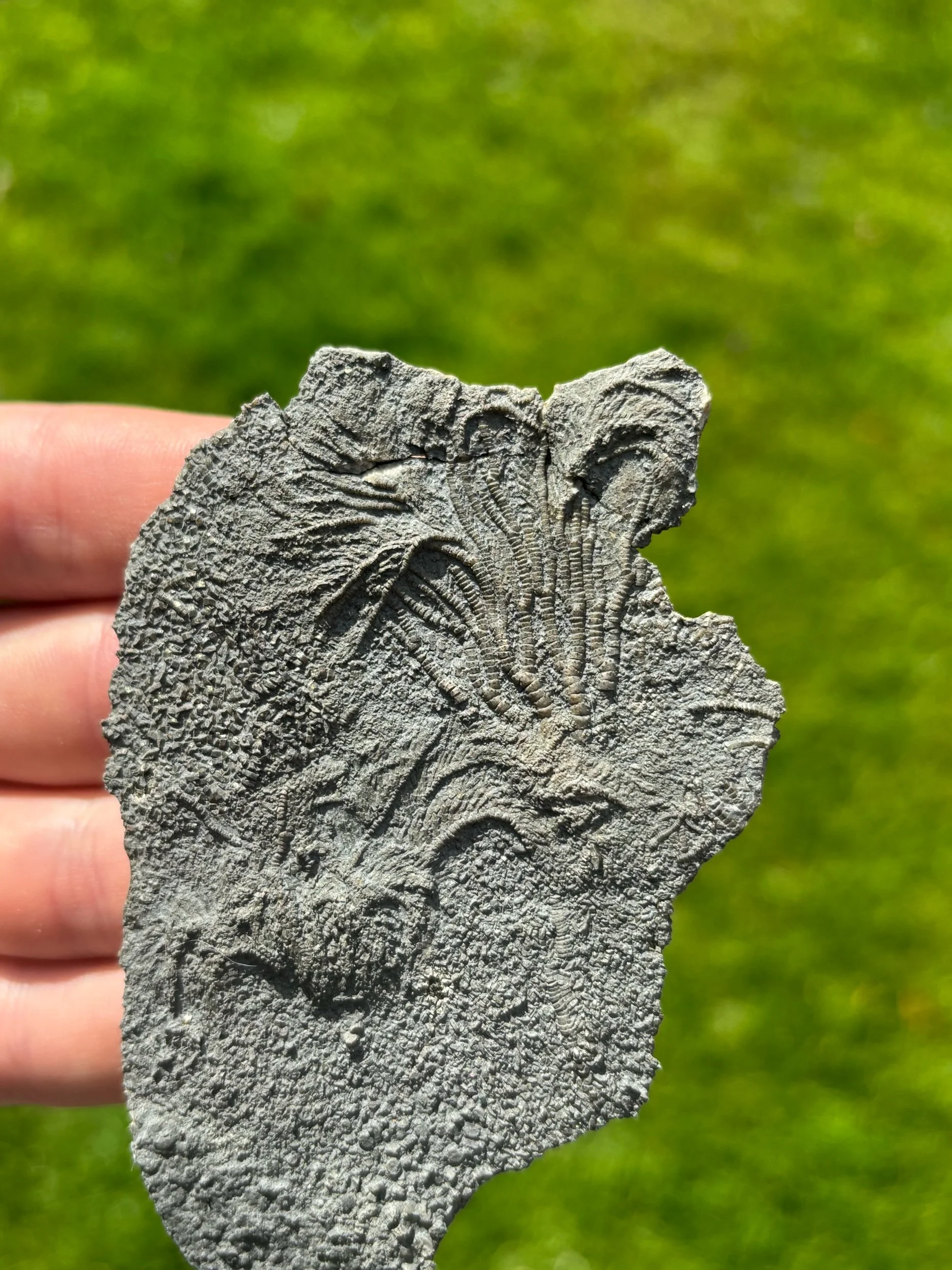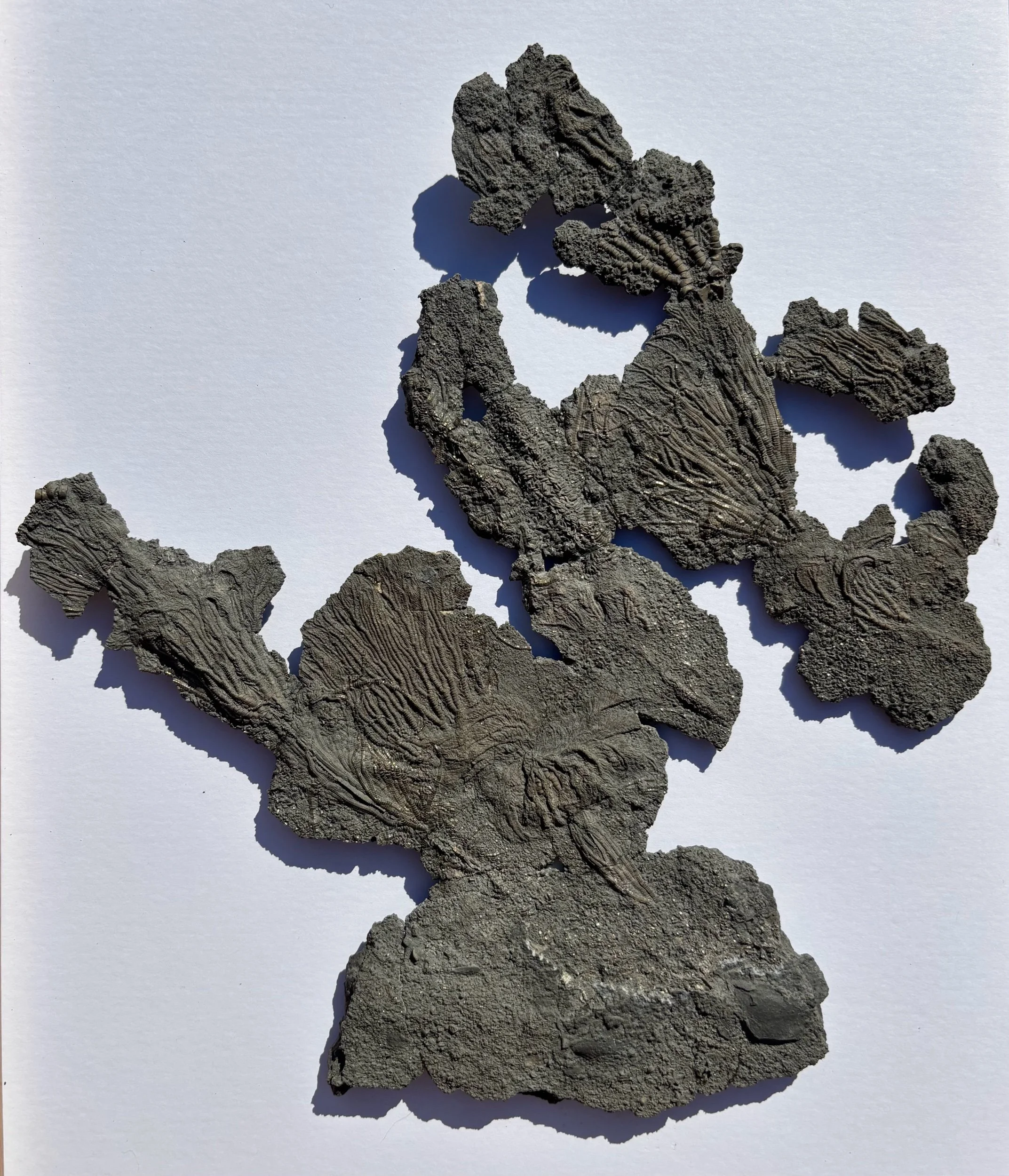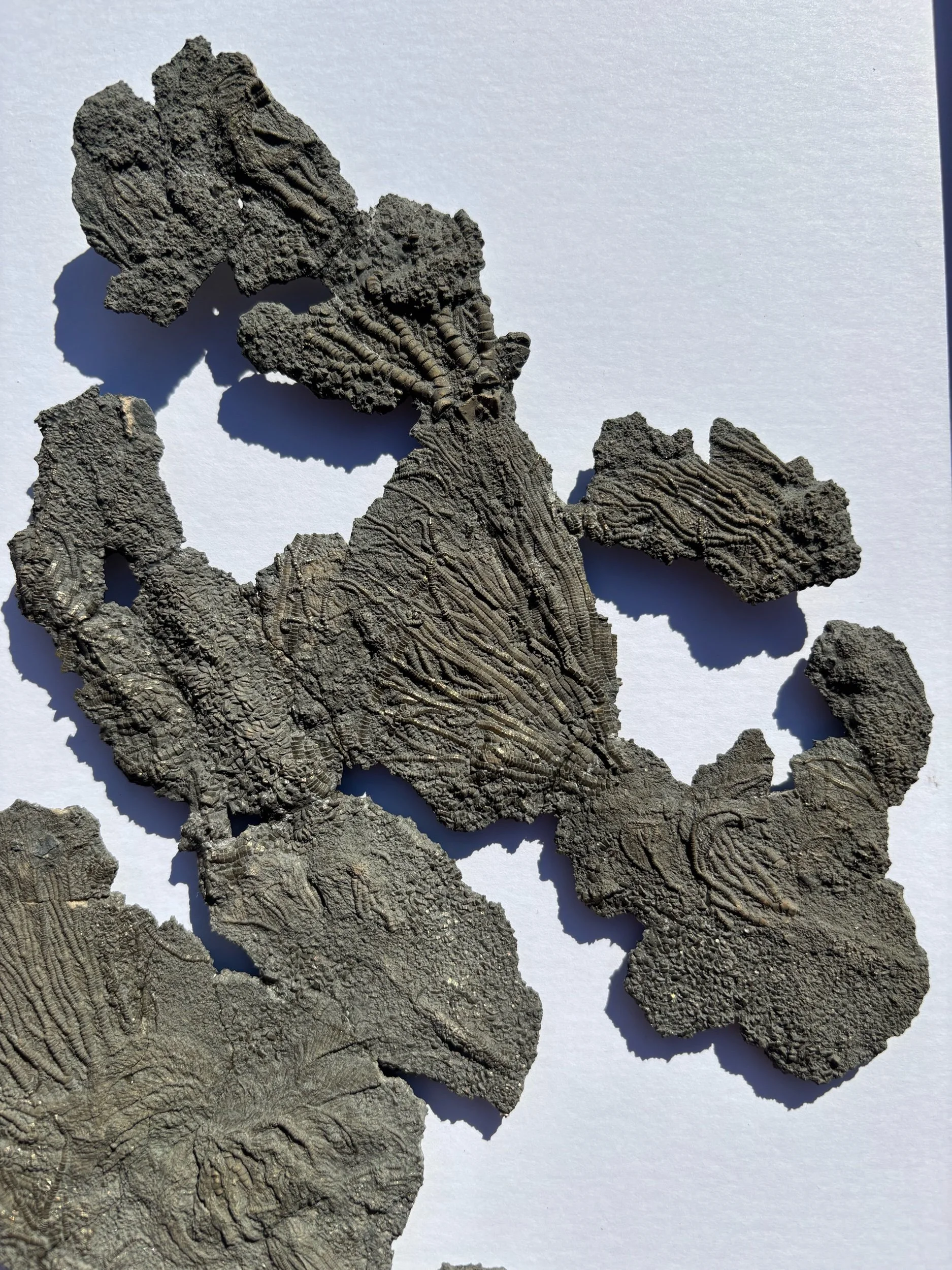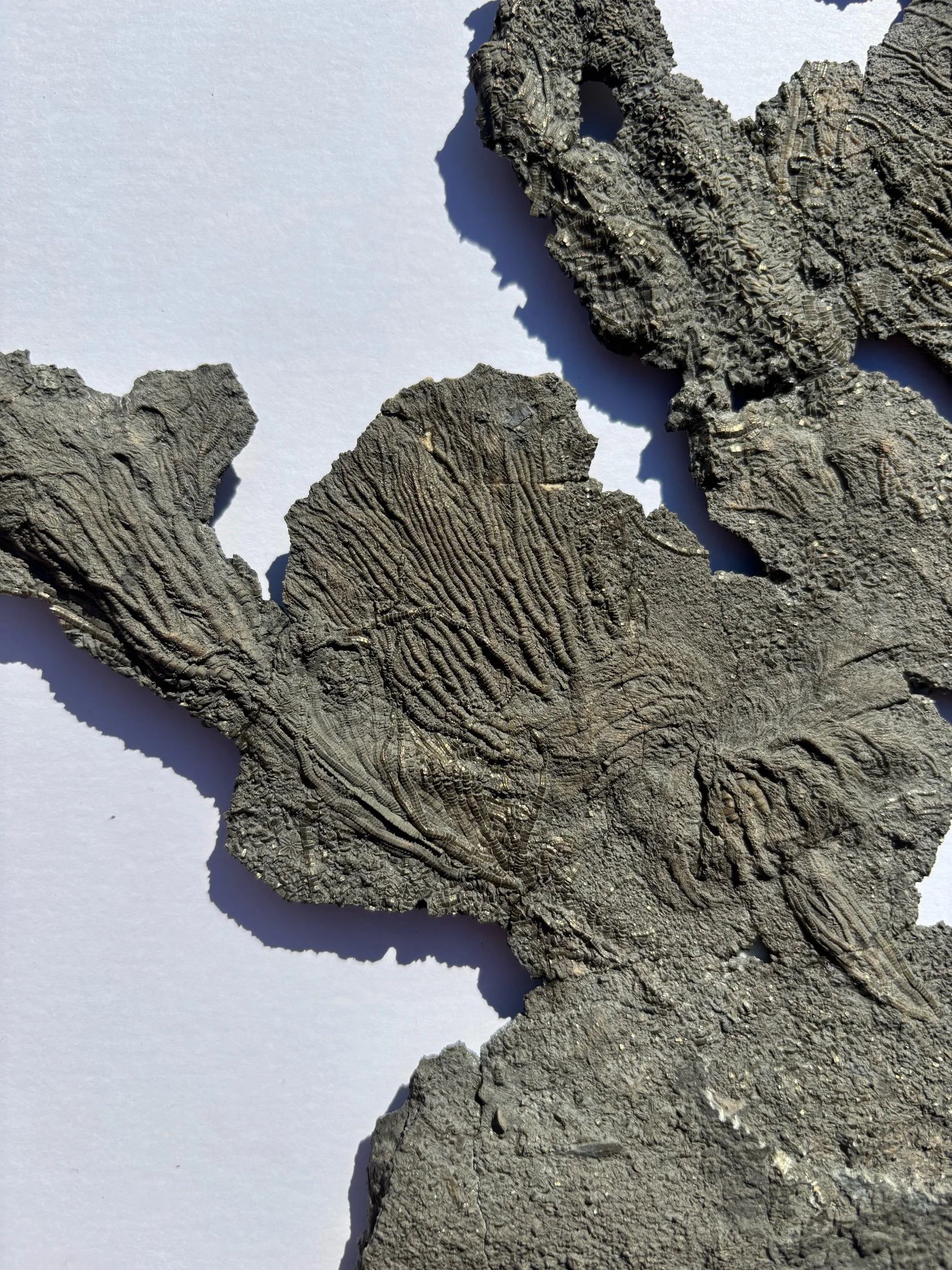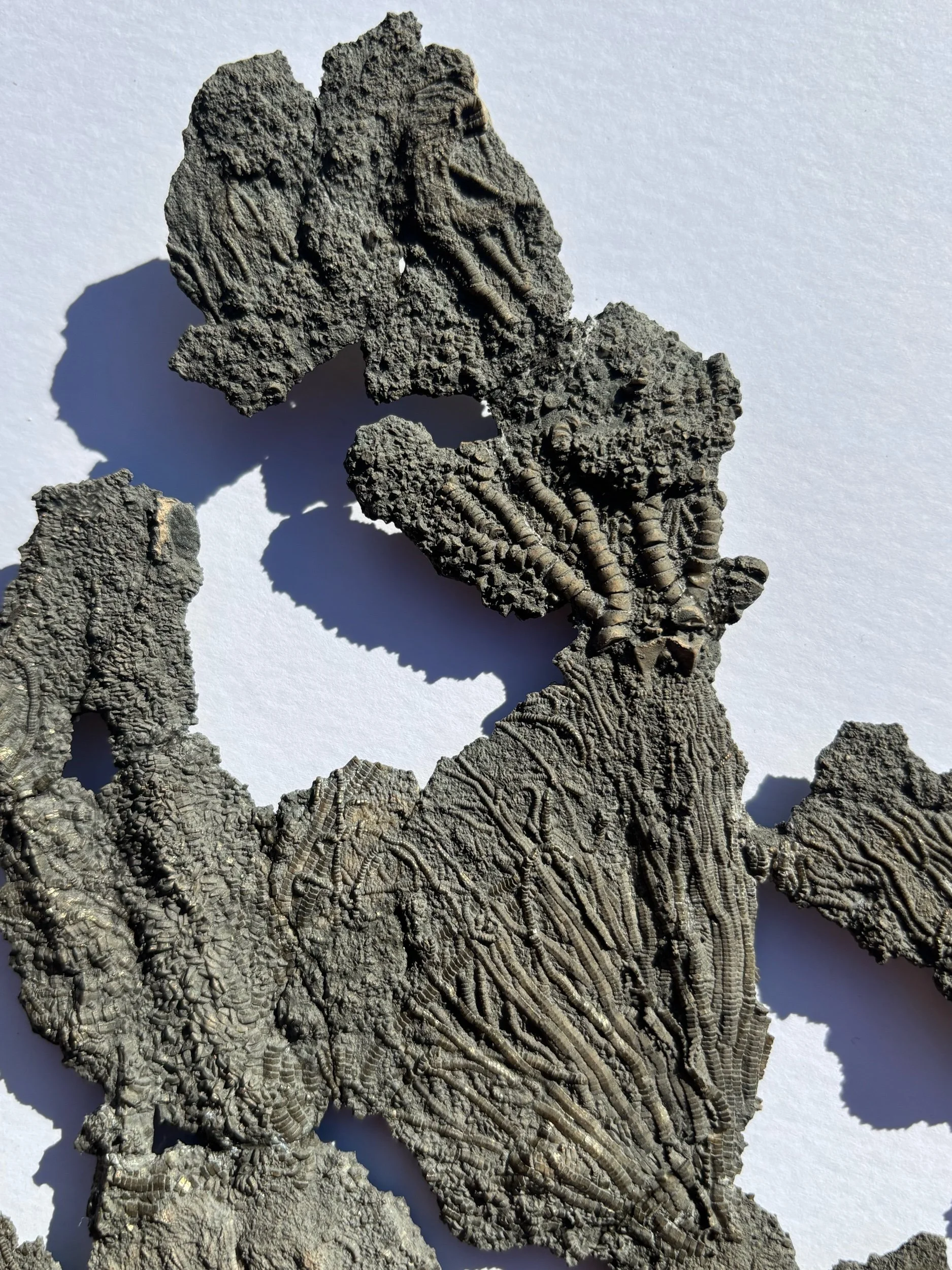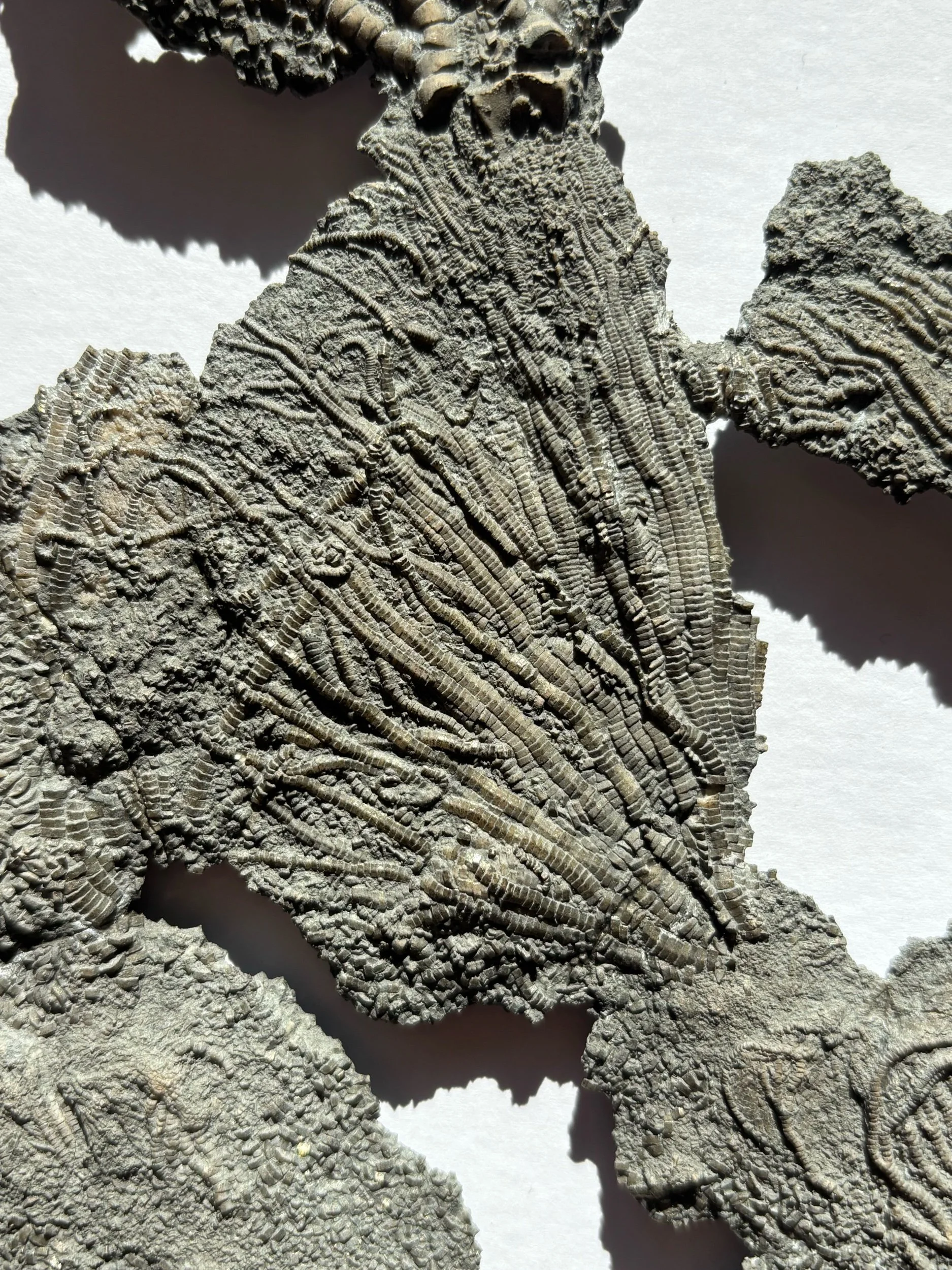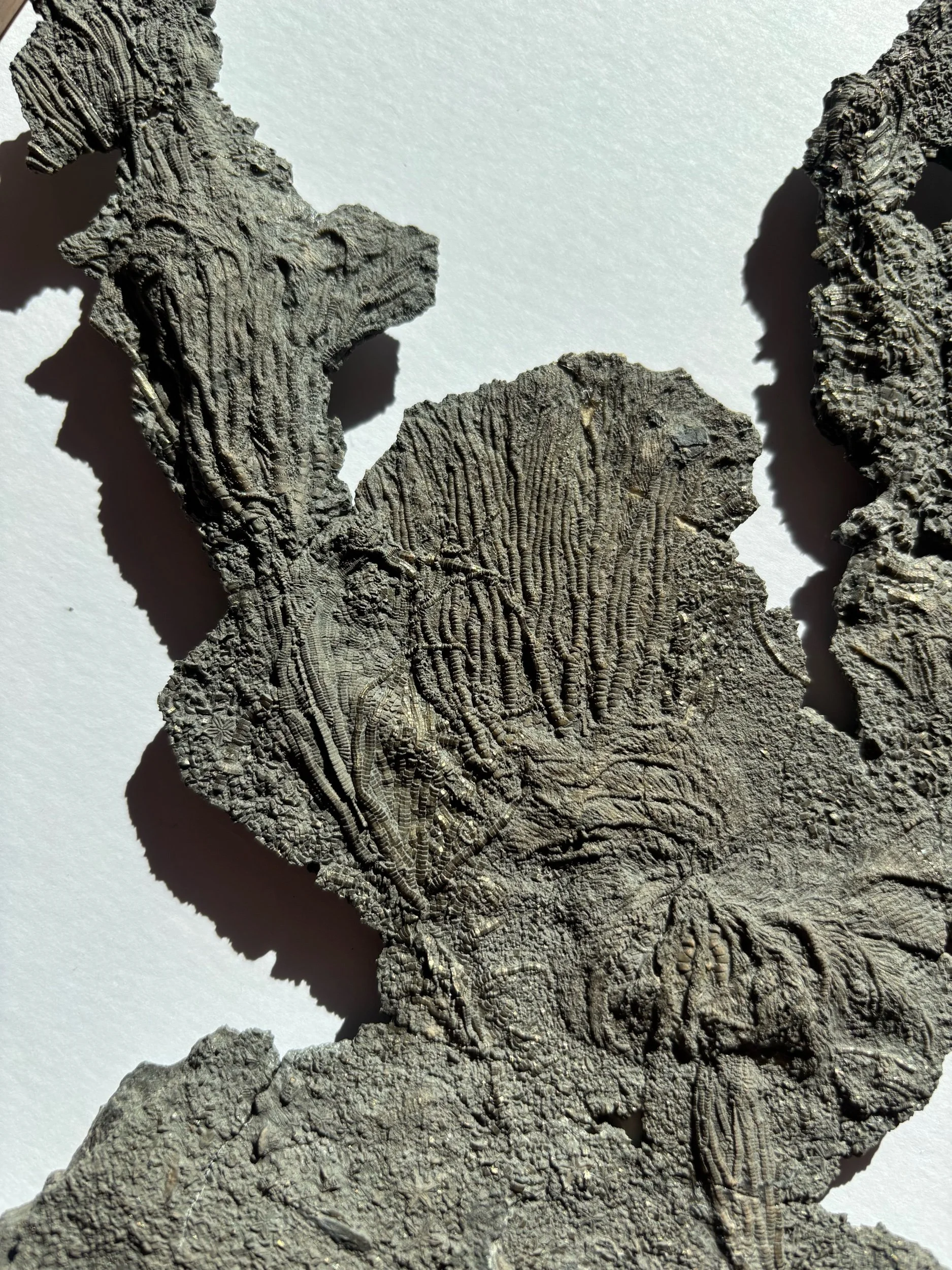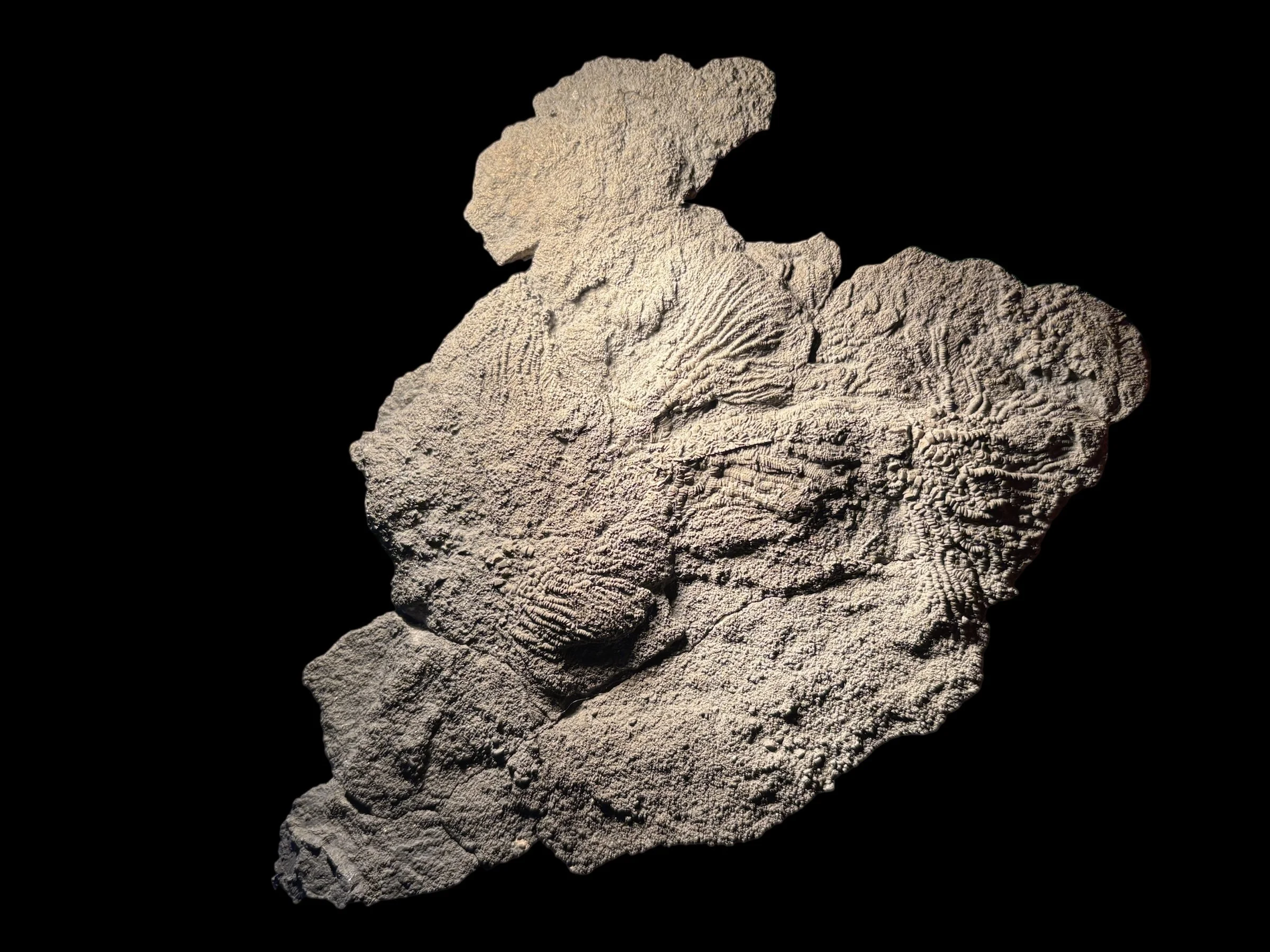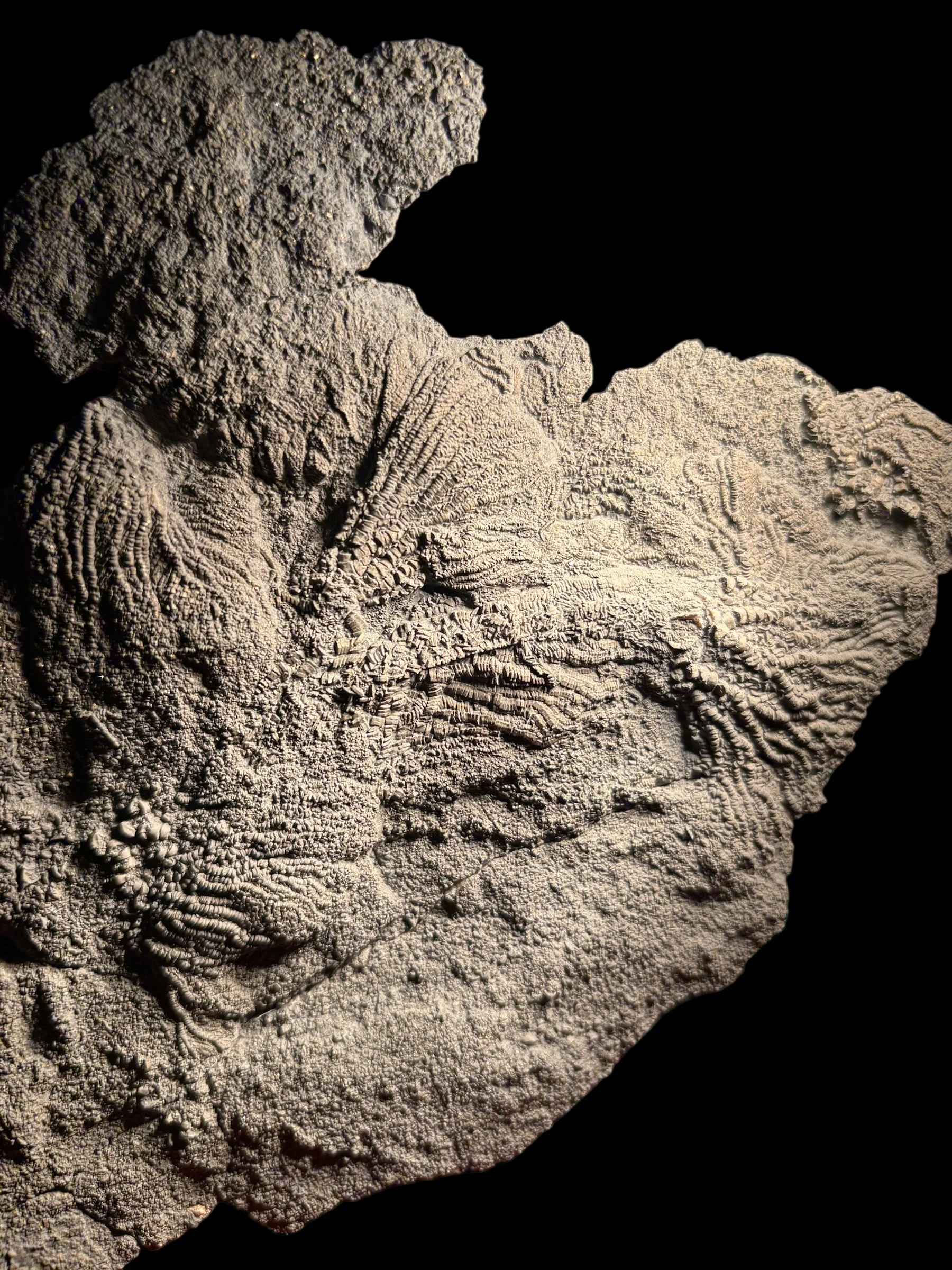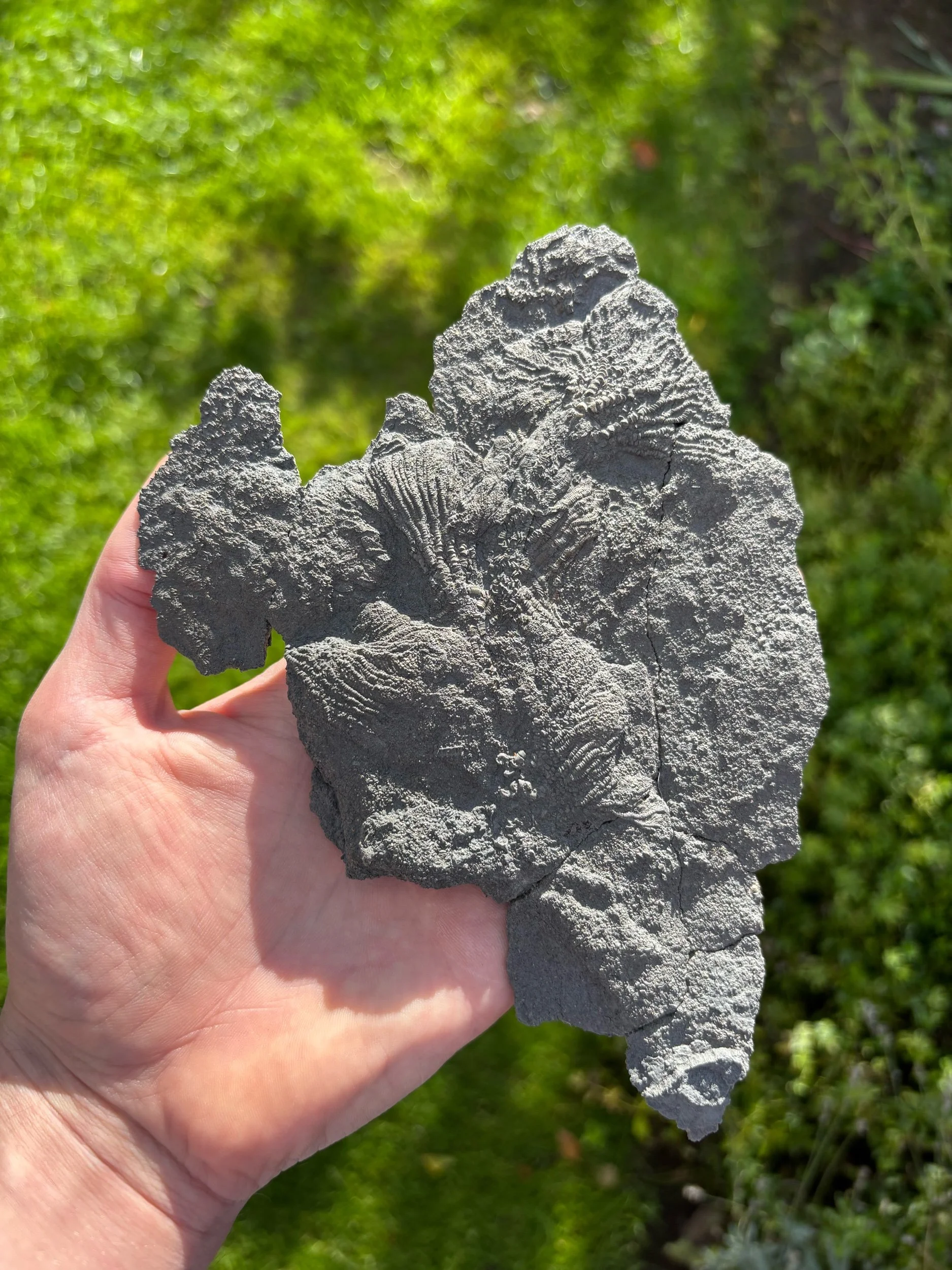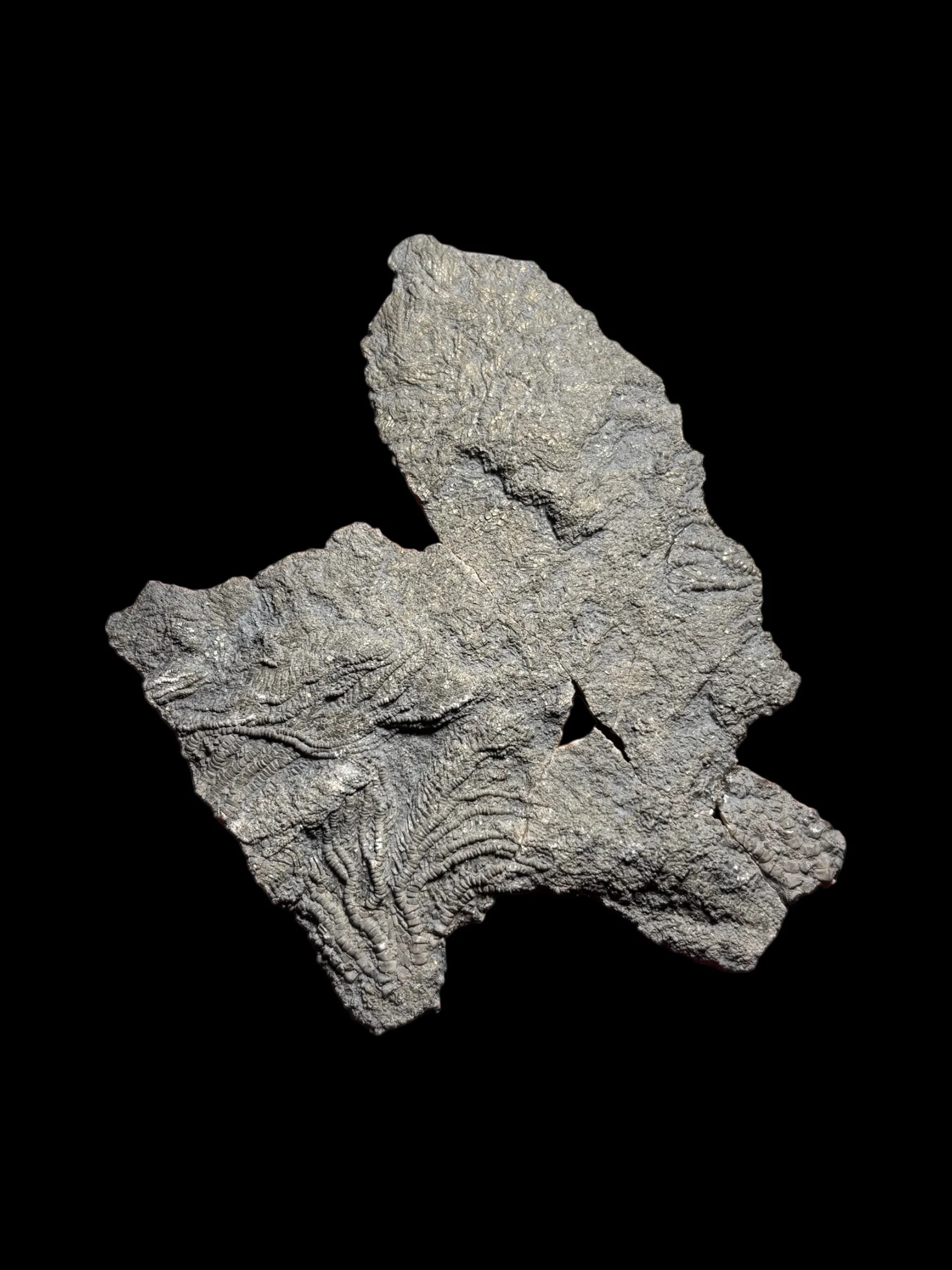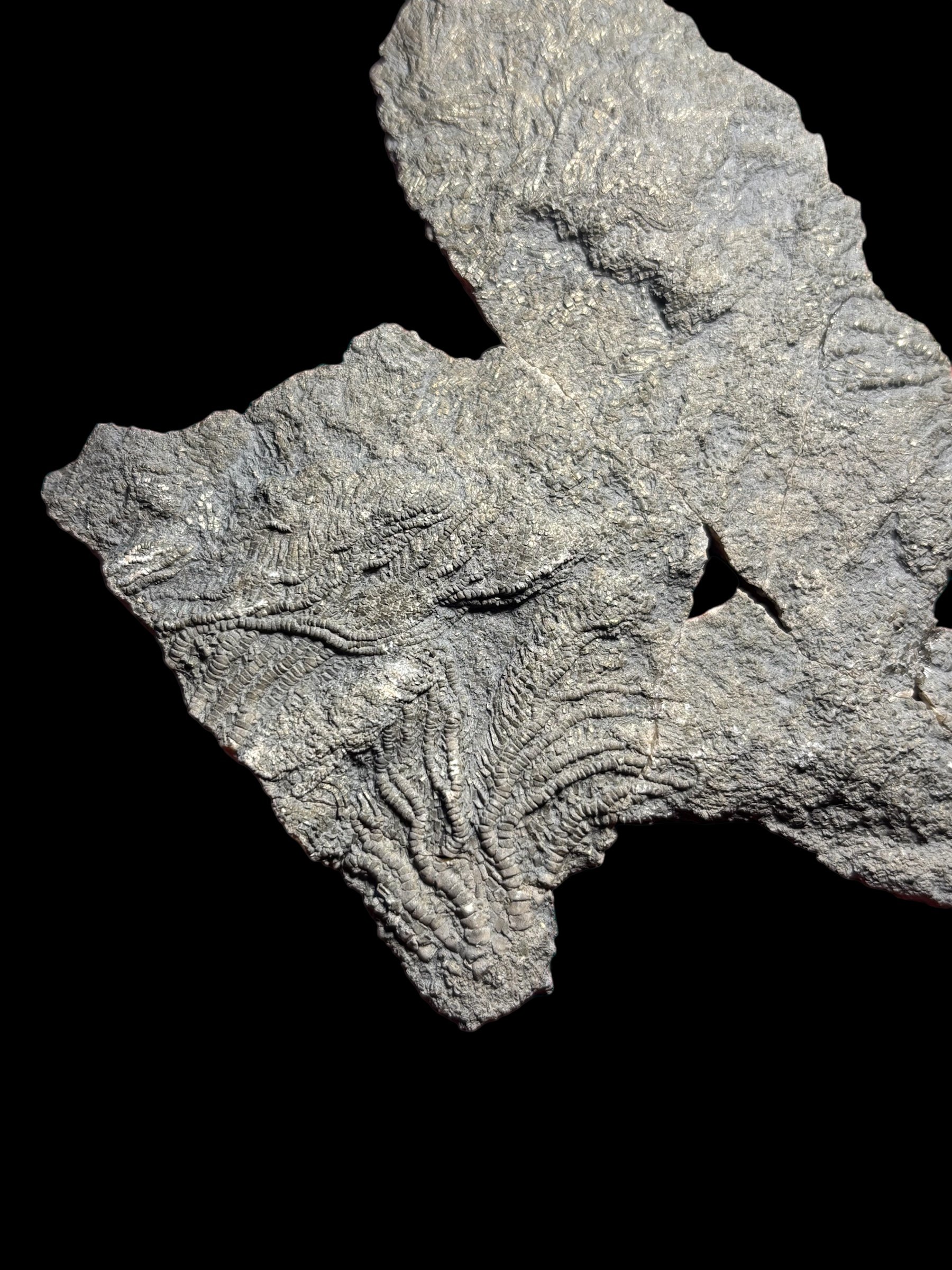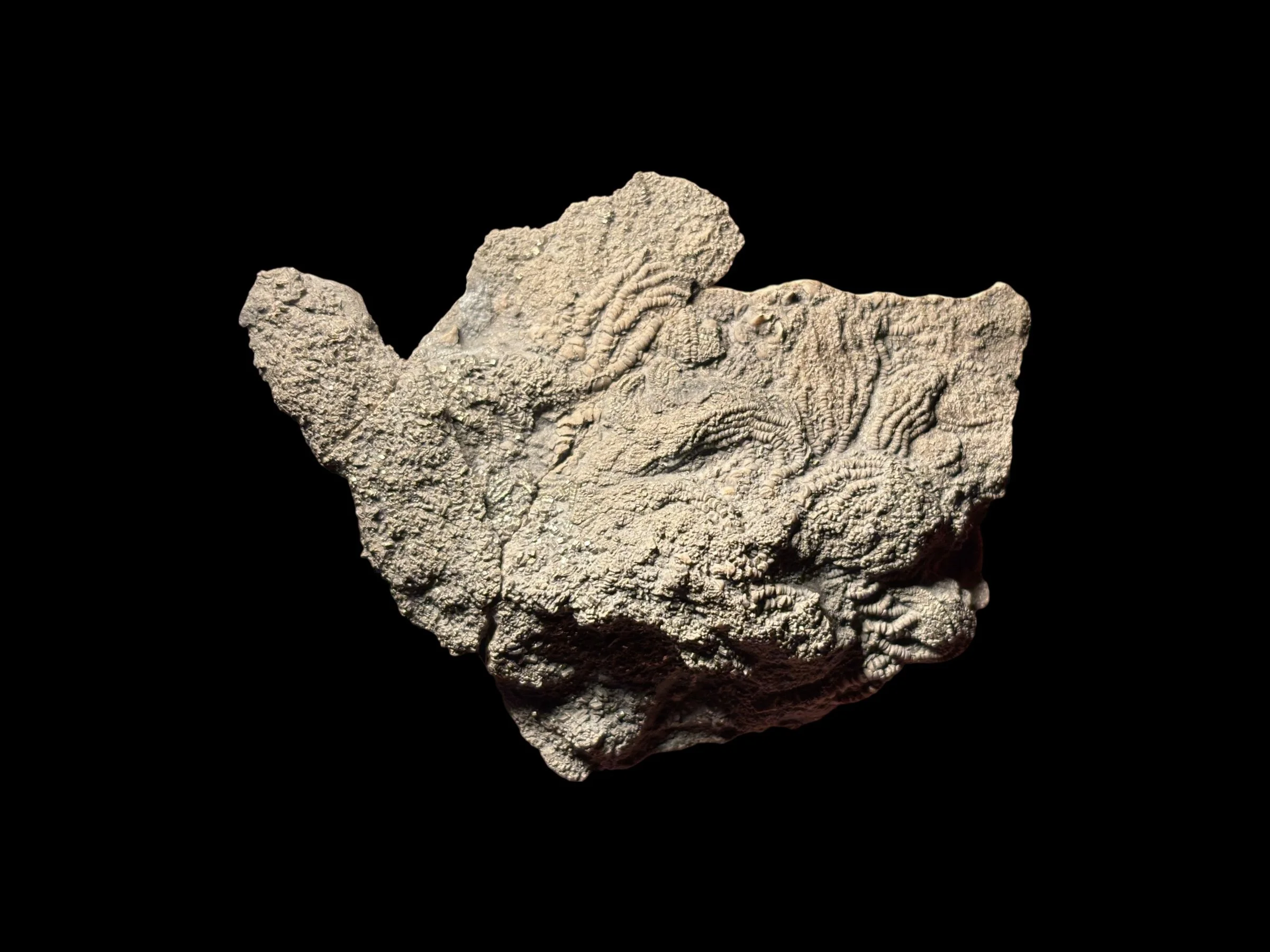
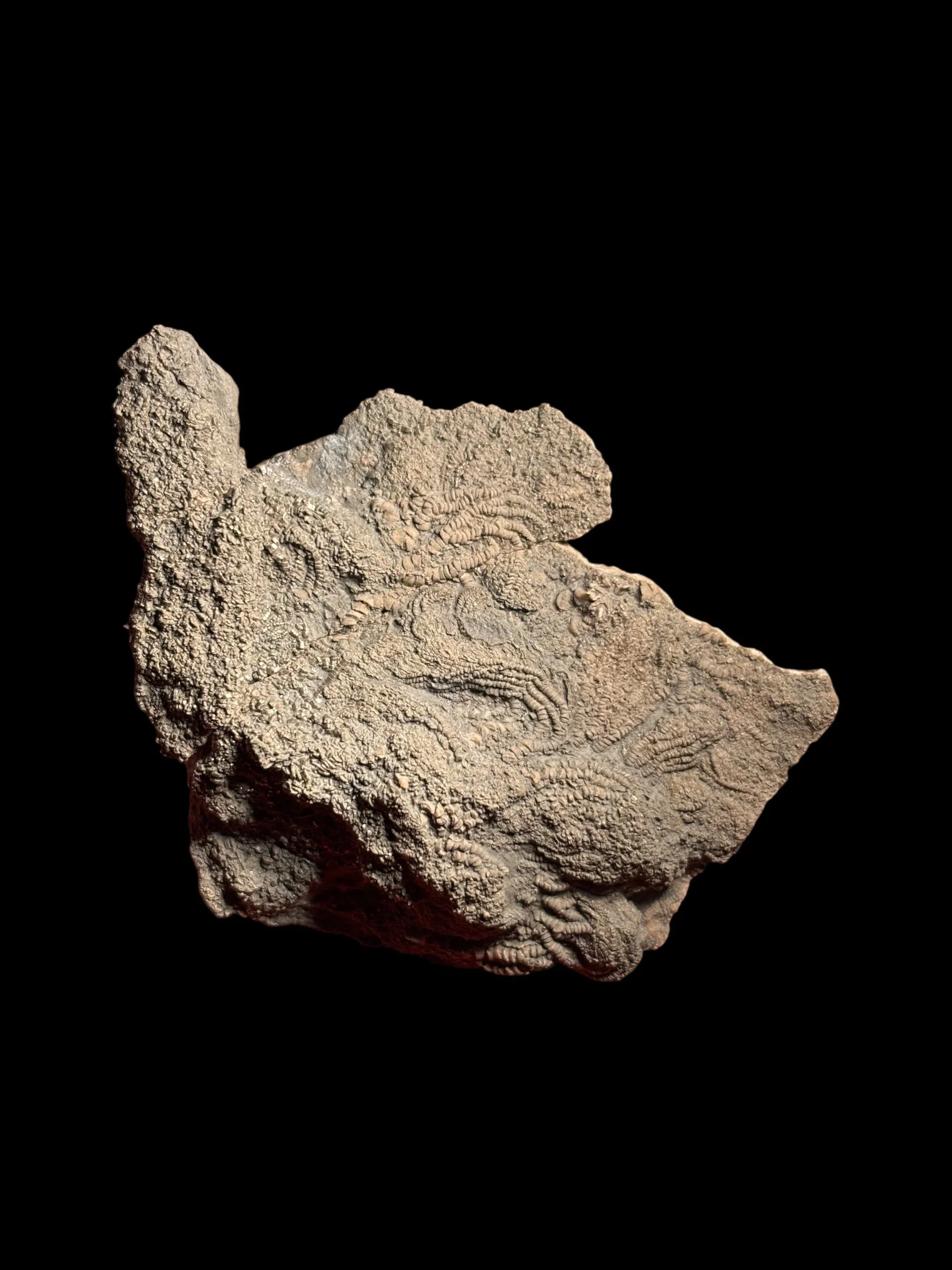
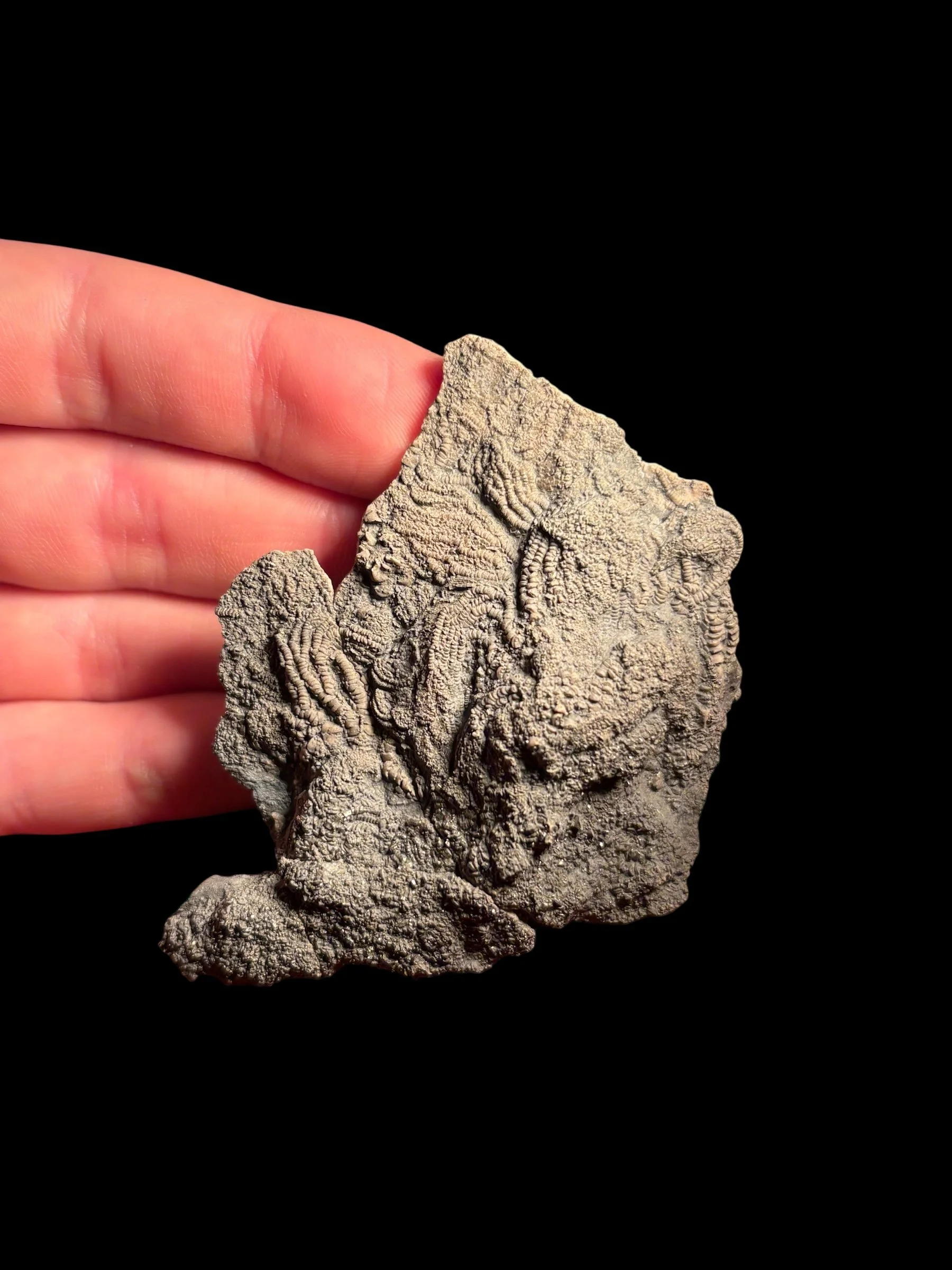

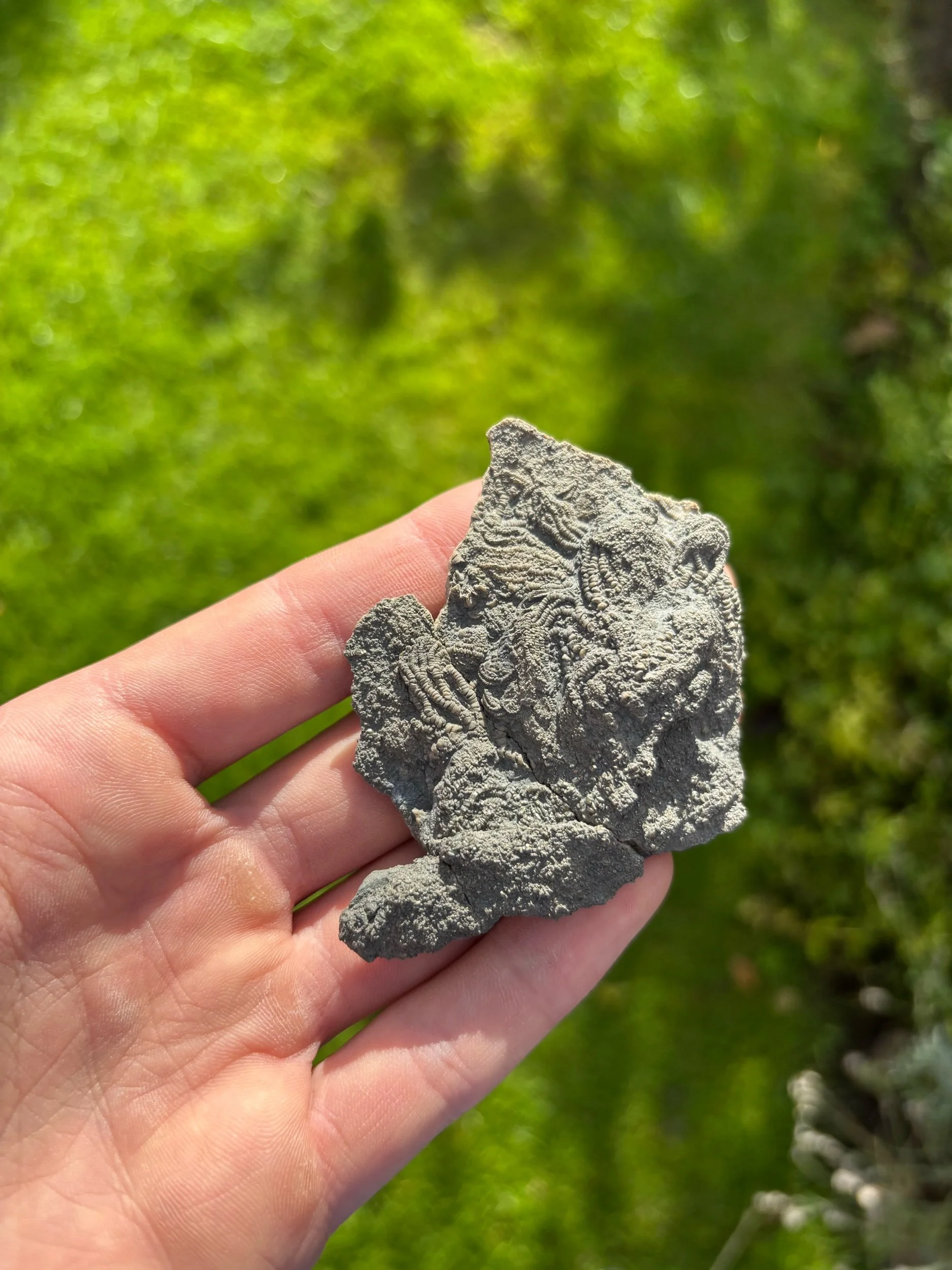
Crinoid (Pentacrinites)
This piece of crinoid lens was found on the beach at Charmouth on the Jurassic Coast of Dorset in 2024, and contains some baby crinoids and would have once been part of a larger but young colony of crinoids. The tentacle-like arms were used to filter feed in the Jurassic oceans around 195 million years ago.
Crinoids would attach themselves to pieces of floating driftwood when juveniles, and would grow off the driftwood throughout their lives, hanging down into the water and filter feeding. When the driftwood became too heavy and was no longer buoyant, it would take the crinoid colony down with it to the seafloor, where the colony would sadly die and become fossilised.
Some species of crinoids are still alive today, although are rare in the modern-day oceans. Although they look relatively plant-like, crinoids are actually animals and are part of the echinoderm phylum, and are related to starfish, sea urchins and brittle stars.
Fossil dimensions: 72mm x 55mm
Age: Approximately 195 million years old.
Species: pentacrinites
This piece of crinoid lens was found on the beach at Charmouth on the Jurassic Coast of Dorset in 2024, and contains some baby crinoids and would have once been part of a larger but young colony of crinoids. The tentacle-like arms were used to filter feed in the Jurassic oceans around 195 million years ago.
Crinoids would attach themselves to pieces of floating driftwood when juveniles, and would grow off the driftwood throughout their lives, hanging down into the water and filter feeding. When the driftwood became too heavy and was no longer buoyant, it would take the crinoid colony down with it to the seafloor, where the colony would sadly die and become fossilised.
Some species of crinoids are still alive today, although are rare in the modern-day oceans. Although they look relatively plant-like, crinoids are actually animals and are part of the echinoderm phylum, and are related to starfish, sea urchins and brittle stars.
Fossil dimensions: 72mm x 55mm
Age: Approximately 195 million years old.
Species: pentacrinites
